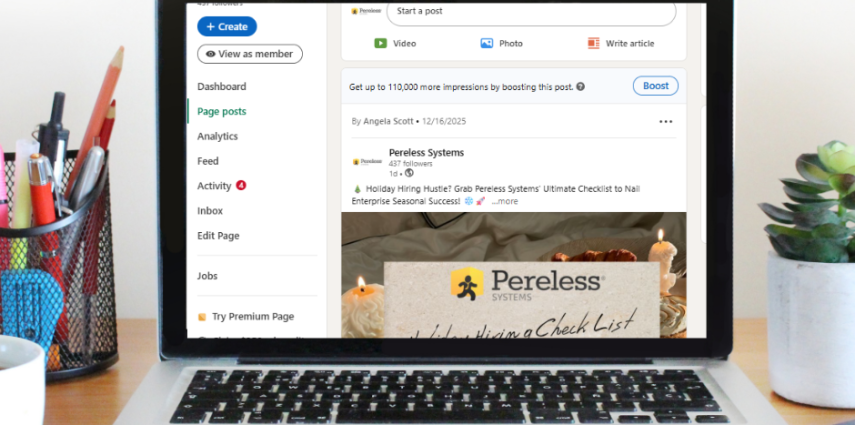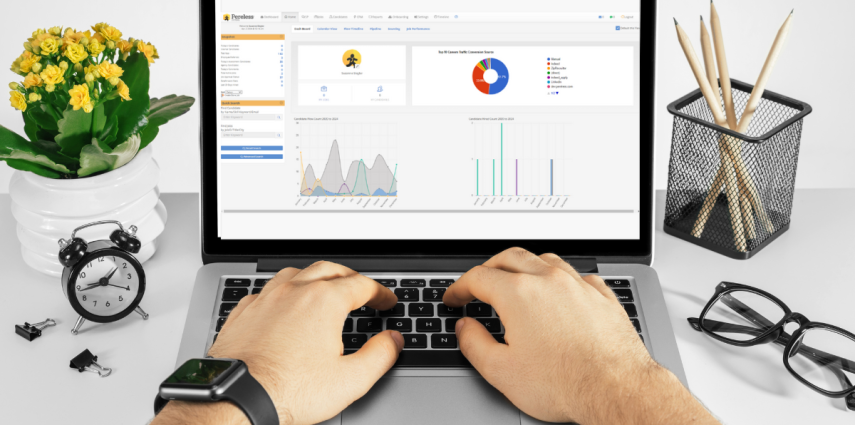In the relentless talent arena of 2025, where 61 million professionals scour LinkedIn weekly for their next move and 6 hires happen every single minute on the platform, staying ahead means more than posting jobs—it’s about proactive hunting, nurturing connections, and converting passive scrollers into star performers. With over 1 billion users globally, LinkedIn isn’t just a network; it’s a goldmine for recruiters. But sifting through it manually? That’s a relic of 2024.
Enter Pereless Systems: The enterprise Applicant Tracking System (ATS) that doubles as your recruiting CRM, blending seamless LinkedIn sourcing with relationship-building tools to locate, engage, and secure top talent. No more fragmented spreadsheets—our platform turns LinkedIn into your personal talent accelerator, helping you build lasting pipelines that drive hires. In fact, 122 million have landed interviews via LinkedIn, with 35.5 million securing jobs through connections forged there. Ready to claim your share? Let’s break it down.
The ATS-CRM Hybrid: Why It’s the Game-Changer for LinkedIn Sourcing
Traditional ATS platforms track applicants post-submission, but that’s reactive in a world where 73% of candidates are passive, waiting to be wooed. Customer Relationship Management (CRM) tools excel at nurturing leads for sales—think ongoing emails, lead scoring, and deal-closing workflows. Now, flip that to recruiting: Pereless Systems acts as your CRM for talent, proactively sourcing LinkedIn profiles, cultivating relationships, and converting “maybe someday” contacts into “you’re hired” commitments.
This fusion is vital because, as LinkedIn’s 2025 data shows, companies leveraging skills-based searches (a core Pereless Systems feature) are 12% more likely to make quality hires. Our system empowers you to search LinkedIn by precise criteria—skills like “SaaS sales expert with 5+ years,” location filters, or even company alumni—then import matches directly into customizable contact lists. Store notes, engagement history, and follow-up tasks, all while syncing with your ATS pipeline. It’s proactive recruiting at its finest: Build rapport over months, then activate when a role opens.
Mastering LinkedIn Sourcing: From Search to Secure Hire
Pereless Systems’ LinkedIn integration isn’t a basic export—it’s a full-spectrum toolkit designed for efficiency in 2025’s fast-paced market. Here’s how it streamlines your hunt for top talent:
- Manage Future Projects: Thinking about finding candidates for new roles that aren’t open yet? Start early recruiting with the ATS CRM tool! Our CRM lets you create your job and locate top talent using our integrations with job boards.
- One-Click Profile Imports & Contact Building: Spot a standout? Import their profile in seconds—complete with resume data, and experience—into your ATS CRM database. Create segmented lists (e.g., “Tech Leads Q1 Pipeline”) to list potential candidates.
- Manually Find Candidates Through Networks: Add a Facebook profile, LinkedIn, Twitter, Phone, and Email all within the ATS CRM tool. Keep all your potential candidates in one place!
Beyond LinkedIn, extend to Monster, and CareerBuilder for a multi-channel net—ensuring no talent slips through.
Elevate Your Brand: Features That Amplify Reach and Reputation
What sets Pereless Systems apart? Integrated tools that make your presence irresistible, turning sourcing into a branding bonanza:
- Customizable Career Pages: Design a mobile-optimized portal that screams your company culture—employee spotlights, and easy-apply applications to capture sourced leads on-site.
- Social Posting & QR Code Magic: Blast jobs to LinkedIn, Twitter, and Facebook with one click via our Social Post feature. Generate scannable QR codes for events or ads—directing traffic straight to your ATS for instant sourcing.
- Job Board Syndication: Post once, reach everywhere—free unlimited listings to top job boards, pulling applications back into your ATS for unified management.
These aren’t add-ons; they’re core to controlling the full cycle: Attract via LinkedIn, engage proactively, and close with data-driven precision.
The Bottom Line: Source Smarter, Hire Stronger in 2025
In a year where AI redefines recruiting—yet human connections seal deals—Pereless Systems’ CRM-infused ATS gives you the edge. Reduce time-to-hire by 40%, nurture 30% more passive candidates into active ones, and build employer brands that magnetize talent. Don’t settle for scattered tools; embrace the one that regulates sourcing, relationships, and results.
Ready to supercharge your hiring game? Schedule a free demo today and see how we turn profiles into payroll!
Pereless Systems: Enterprise, powerful ATS for teams that hire to thrive.
Sources: https://www.linkedin.com/pulse/100-essential-linkedin-statistics-facts-2025-your-guide-dilawar-malik-pog9f
https://wavecnct.com/blogs/news/linkedin-statistics?srsltid=AfmBOoodoTMCiZ-V3j1v2yhh0JhqRQJWcTzyF0Ck-XPDpez_OGJ1_Ail
https://kinsta.com/blog/linkedin-statistics/
https://www.linkedin.com/business/talent/blog/talent-acquisition/future-of-recruiting-2025
https://business.linkedin.com/talent-solutions/resources/future-of-recruiting
https://thesocialshepherd.com/blog/linkedin-statistics










